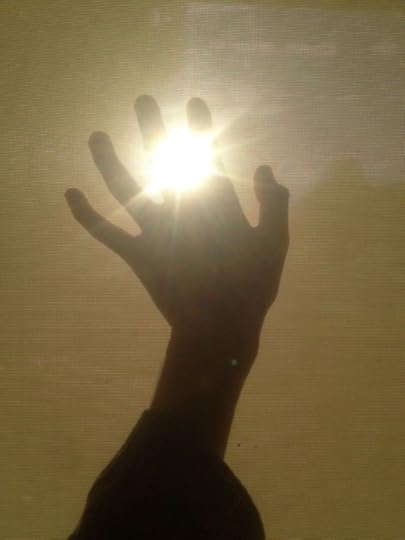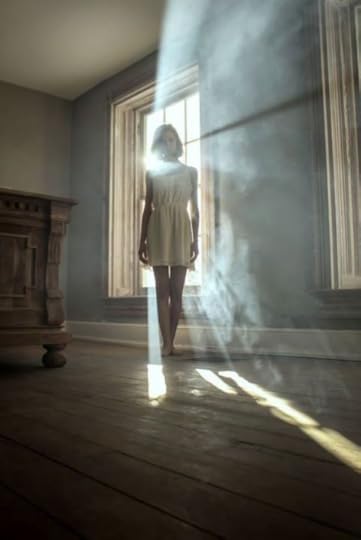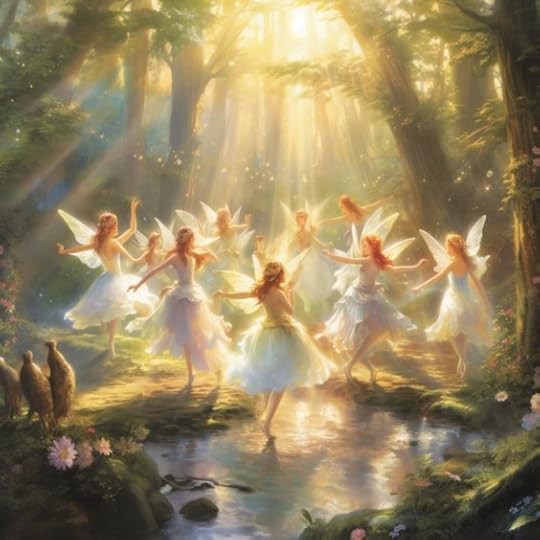Shining Daylight on the Creative Impulse

This is going to be a something of a stream of consciousness. An attempt at articulating a process that I’m still smack in the middle of. There will be no neat beginning, middle, and end. At least not today. Nevertheless, I hope you’ll indulge me, because I think this could be illuminating.
See, I’ve been experiencing what I would call a creative stutter. This is not to be confused with writer’s block, which is when a writer stares at a blank page for hours, days, or months on end while the whites of her eyes sprout spider veins, and a permanent garland of sweat beads forms along her hairline.
A creative stutter is more akin to having difficulty connecting with the work being put on the page. The most accurate analogy I can conjure is that of a half tuned-in radio station. It’s when you’ve found a great song that you love and want to wiggle your butt to in the bucket seat of your Jeep, but the experience is frustrating and inconsistent. Sometimes the song comes through loud and clear, and you start banging your hands on the steering wheel, belting out the lyrics and thinking, Hey, I sound pretty good. Then all of a sudden, there’s a bit of static and the melody is barely audible. It returns a few seconds later but begins to fade again, like it’s gone under water. You groan, you play with the dial trying to tune it in, and YES, you’re able to get it back! But only for a few lyrics. Just as you start singing along again, shaking your shoulders, swishing your hair from side to side, the static returns. Finally, you turn the dial to another station. It may not be playing the song you want to hear, but at least you can hear it.
This pretty much describes what I’ve been experiencing. It started roughly around the time my daughter went back to school, which also coincided with a change in the way we’re doing things this school year. My husband’s work schedule amped up, and I’ve had to do pretty much all of the driving (chauffeuring) of our daughter, not just to school, but to her various appointments and activities. Even a seasoned work-from-homer like me has trouble adapting to this level of disruption.
But if I’m to be honest with myself, this hiccup in my routine could be gotten around. I’ve done it before, and with multiple children to boot.

What’s really been plaguing me is simply the result of a bottleneck. A period in life where emotions, anxieties, the changes within us and around us, all seem to converge, making us vaguely uncomfortable. Dr. Suess called it “the waiting place,” and I think that’s spot on.
“Wherever you fly, you’ll be best of the best. Wherever you go, you will top all the rest. Except when you don’t. Because sometimes you won’t. I’m sorry to say so, but, sadly, it’s true that Bang-ups and Hang-ups can happen to you.” –Dr. Suess
I was sharing my exasperation about this creative issue of mine with a friend, and after listening patiently to my restless, stammering diatribe about the affliction, she asked me if I’d ever read a book called The Artist’s Way.
I told her I hadn’t. Truth be told, I’d never even heard of it.
But I trusted my friend, and didn’t feel I had anything to lose, so I ordered a print, hold-in-your-hand copy, then went about my business.
When The Artist’s Way finally arrived in my mailbox about three weeks ago, I’d almost forgotten I was waiting for it. I was happy to get it, but my initial excitement about the book had cooled, and I had a lot to do that day. So, I dropped the book next to my bedside table, then promptly left to pick up my daughter from school. In my haste, I’d placed The Artist’s Way on top of my book pile, essentially letting it jump in line to #1 on the stack of books that I’ve marked as “urgent: to-read.” That little oversight turned out to be fortuitous, as that night, as I crawled into bed, I reached over to the top of that “to-read” pile, grabbed The Artist’s Way and opened it up.
From the first sentence, I was hooked. It’s not an exaggeration for me to say that it felt like a big, bright light went off in my head, then its warmth began migrating down to my heart. It’s still in the process of that migration, but that’s neither here nor there.
The important thing is that soaking up just a few measly pages of this book truly made it feel like I was encountering a first sunny day after months of rain.
To give you a bit of background about what many creators have called “the artist’s bible,” I’ll first tell you that it’s written by a writer named Julia Cameron who also happens to be the ex-wife of film director Martin Scorsese. Not surprisingly, she’s pretty brilliant. What is surprising – or at least it was to me – is how spiritual a manual she’s written. I mean, it does say, “A Spiritual Path to Higher Creativity” right on the front cover, but I guess given how secular artists these days are, I didn’t really believe it.
Cameron is unapologetic about asserting that our creative inspiration comes from somewhere inside of us yet is connected to a greater entity. I should mention that she’s agnostic about what an individual artist might call that entity and invites the creator to insert their own interpretation. You can call that entity God, The Universe, or Sally Mcgillicuddy. She doesn’t care.
I opted for God, because I’m old school.

I could see from the start why The Artist’s Way is referred to as a bible, and it’s not just because of the spiritual approach I described. Unlike other inspirational arty type books – Rilke’s Letters to a Young Poet comes to mind – it’s not meant to be devoured. Cameron’s meditation/manual on unleashing the creator within demands to be taken bit by bit, applied to an artist’s process like coats of paint.
Only a few pages in, having barely slapped some brushstrokes of primer on, I started to notice a difference in myself. Cameron’s words about the creative process are gut-punch true, which certainly gets a writer like me in the mood. She asserts that creativity – regardless of how it’s expressed – is the natural order of life and comes from a light within that we are born to nurture. Powerful words, certainly. But it was her suggestion of trying a daily exercise which she calls “morning pages” that started to make a startling difference in the way I approached my work and my days.
“Morning pages” is a simple habit of getting up and writing three – no more or less – stream of consciousness pages first thing, or in my case, after I make my coffee. It doesn’t matter what gets put on the page, only that it flows from what’s top of mind. No editing, no hesitating. “Morning pages” don’t even have to be about work. I’ve found that at least half of the time, mine are not. On the days I write my “morning pages,” I’m more focused and productive, even when those days have to be taken in piecemeal. It was obvious to me from the get-go, that if applied consistently, as a regular part of the day, 7 days a week, a significant change over the course of time was not only possible, but inevitable.

Only consistency soon revealed itself to be a problem. With morning light not coming until 7:00 am, I found it difficult to get up before everyone else. Seven is pretty late in our house, especially during the week, as the dog needs to be fed, my daughter’s needs must be met, etc. And yes, of course, I could have set an alarm, but that would wake up my husband for no good reason and he’s already exhausted and grumpy from his new workload. Some days my “morning pages” would get put off until it wasn’t even morning anymore, at which point there was already a lot of gunk in my head and the stream of consciousness I was trying to summon felt sticky. Or I’d end up not getting to them at all. At a certain point, it would start to feel like there was just too much to do in the day and getting to my “morning pages” too late made them feel indulgent – and not in a good way.
I realized on one haphazard morning about ten days into this creative experiment, that what I needed was more daylight. Or rather, for daylight to come just a little bit earlier. Lo and behold, in one of those acts of synchronicity that tend to follow mergers of intention and action – and thanks to a satirical letter written to The Journal of Paris by American founding father Benjamin Franklin back in 1784 – I got some. To give you a little fun historical window dressing (you know I love this stuff), Franklin’s letter detailed his cockamamie idea of setting clocks one hour ahead in spring and one hour behind in autumn. This was proposed in regard to conserving candles during the winter months and apparently got a big laugh back in the eighteenth century. It was considered so preposterous – even by Franklin himself – that it would take nearly two hundred more years for this scheme to be implemented en masse.
Now, I realize that I’m in a minority when I say that I love Daylight Savings Time. Many find it annoying and unnecessary. Arizona natives often brag about how their glorious state never adopted the looney practice of changing the clocks and never will, thank-you-very-much. But I’ve always had a deep appreciation for Daylight Savings Time, even when I didn’t actually need an extra hour of sun to get motivated.

I love the shift in the day and the way it changes my perspective on how the day will unfold in the new season. I love that all of a sudden it gets dark earlier, cold earlier, prompting us to light a fire. The firelight flickers over our living room and infuses the air with the smell of smoke that I find sublime. I can watch the sun set from my office window, giving a natural end to my day, and extending the cozy glamour of night. There’s something about cooking dinner when it’s already dark that makes it feel decadent and special, too.
In the spring and summer, Daylight Savings Time takes the opposite direction. We sleep longer and work later, as the kids are out of school and sports and enrichment activities are no longer packed between four and eight in the evening. Those months are for long evening walks to clear the brain, working or entertaining later into the night. For watching the sun rise from our bedroom window on weekdays and enjoying the extended play of light, as it moves across our house creating shadows and streaks of sun filled with tiny, twinkling specks of dust that look like fairies.
Daylight, when manipulated just a single hour can have a profound effect on our lives, at least in my experience. Just now, in these past few days, it’s made “morning pages” a more natural part of my day, allowing my words to flow more readily, from a place that’s rawer and more instantaneous. It’s an illusion, some might say. The day hasn’t really changed all that much. But illusion is what creativity is all about, and sometimes I need a bit of a mirage to help me construct a fantasy.
To be continued…




